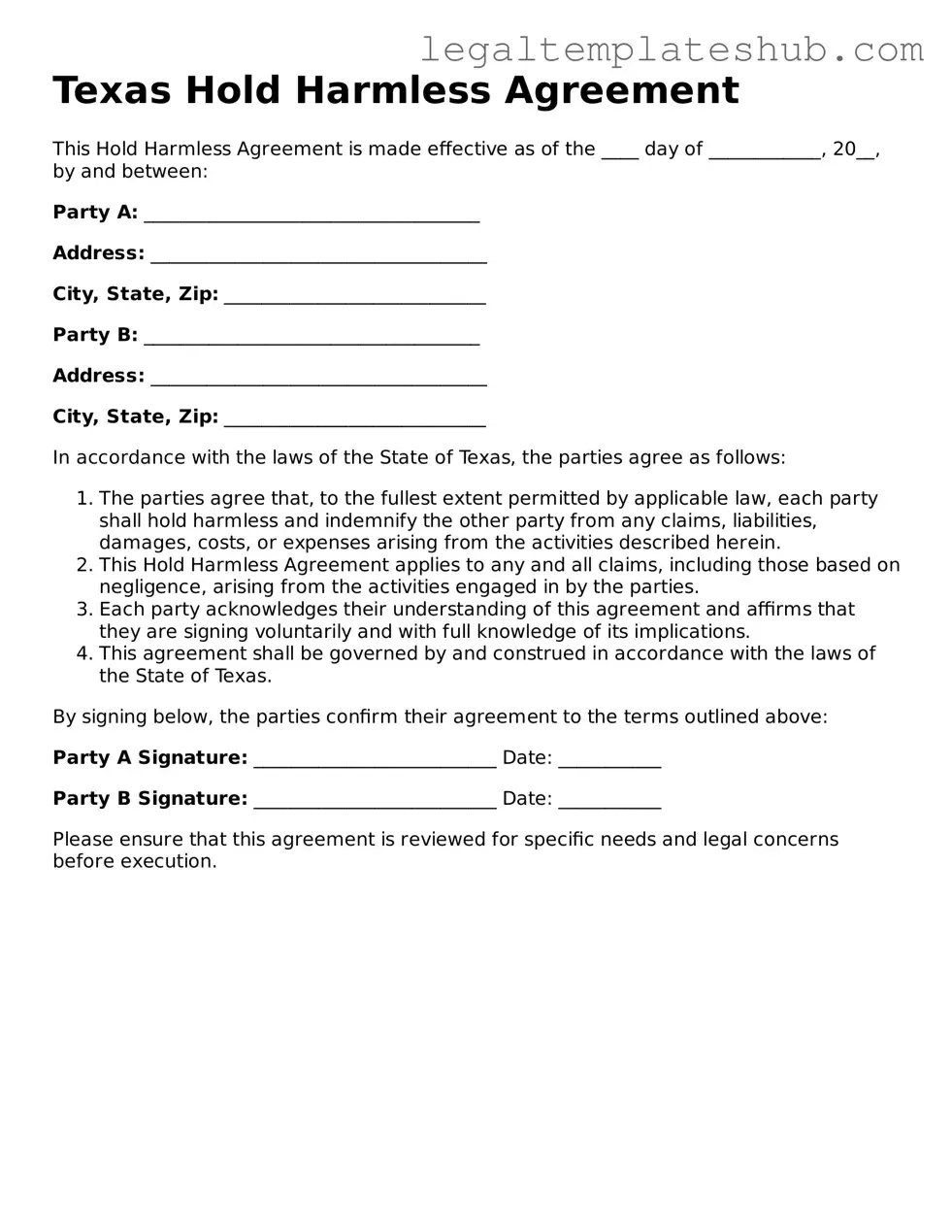Printable Hold Harmless Agreement Document for Texas
A Texas Hold Harmless Agreement is a legal document that protects one party from liability for any injuries or damages that may occur during a specific activity or event. This agreement is commonly used in various situations, such as rentals, events, or construction projects. If you need to fill out this form, click the button below.
Access Editor
